This post may contain affiliate links. We may earn a small commission from purchases made through them, at no additional cost to you. You help to support resin-expert.com
There is always a chance of spilling a little paint when working around the house. Maybe you have done the best you can to cover areas, but you still somehow manage to find paint splatter on surfaces when you are finished. Removing paint from metal and most other surfaces is easy; you simply wipe it off with a solvent. Removing paint from plastic, on the other hand, can be a little more difficult as solvents can damage the surface. Thankfully, when it comes to how to remove paint from plastic, there are a few safer methods.
Table of Contents
At home or work, if you look around, you are bound to find numerous plastic items and products.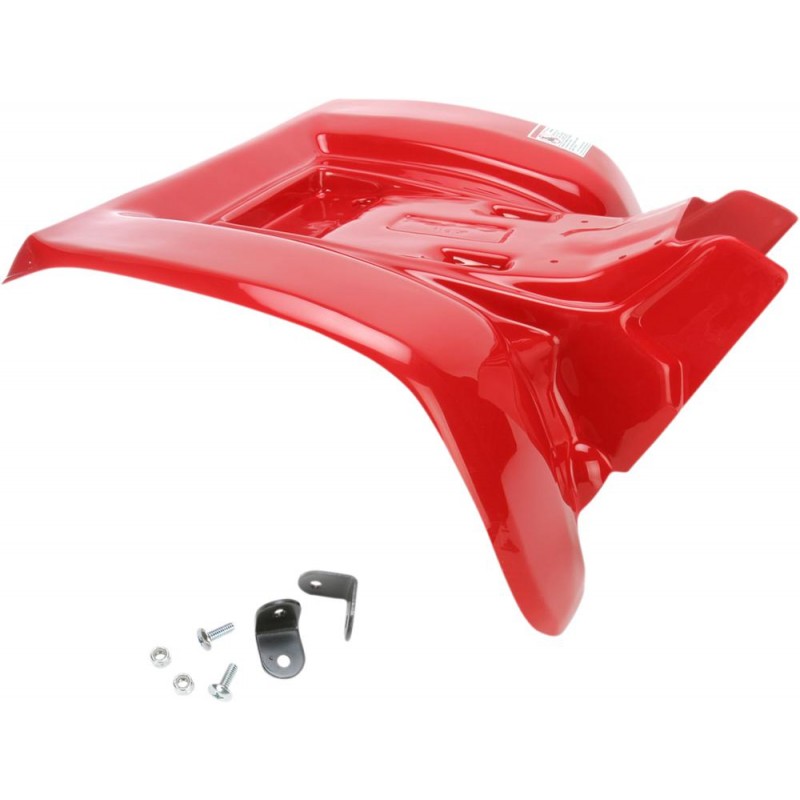 Plastic has become an extremely common material that comes in different forms. There are several primary forms of plastic as follows:
Plastic has become an extremely common material that comes in different forms. There are several primary forms of plastic as follows:
As you can see, plastic is quite a broad term as there are many different types of plastics available today.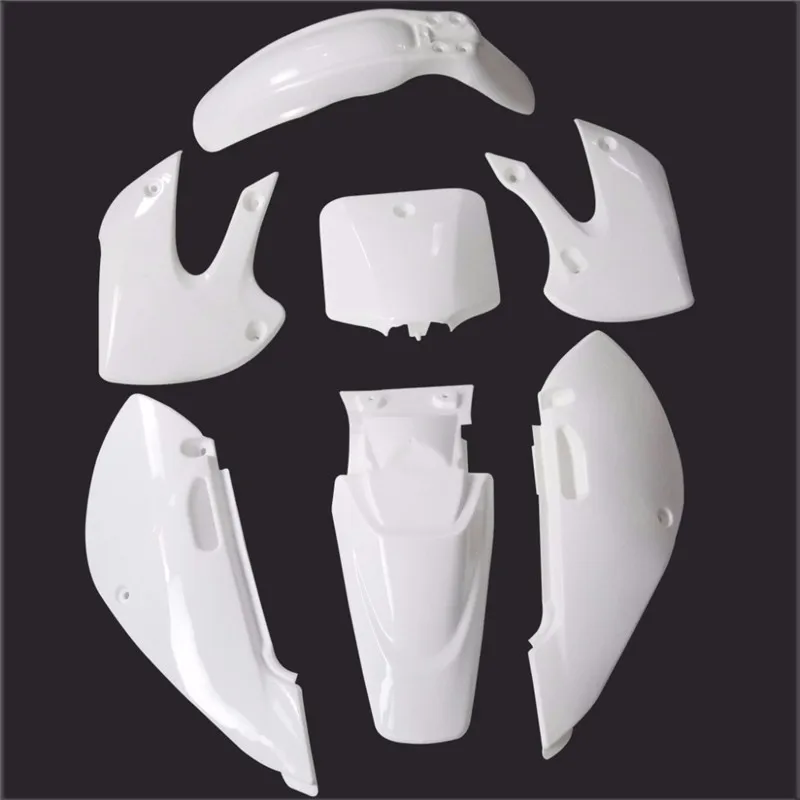 The type of plastic can also play a role in removing paint from plastic as some are harder and more durable than others. So, what are the possible cases where removing paint from plastic is necessary?
The type of plastic can also play a role in removing paint from plastic as some are harder and more durable than others. So, what are the possible cases where removing paint from plastic is necessary?
When trying to strip paint from plastic, using a solvent may just damage the item you want to clean. The easiest and safest method to try first is simple, use a rag and some soapy water. Rub the area until the paint comes off and wash clean with a wet cloth. You can also soak plastic items if possible. This is most effective when done immediately and the paint has not dried yet. However, if the paint remains, you can move on to something else. Below are more methods on how to remove paint from plastic.
However, if the paint remains, you can move on to something else. Below are more methods on how to remove paint from plastic.
Another easy method to help you strip paint from plastic is by gently scraping it off using a paint scraper. This method works best on smooth plastic, but whatever the case, be careful to not be too aggressive or you could damage the surface. Instead of a paint scraper, you could also try a blade, screwdriver, or putty knife. Make sure the scraper is at an angle to scrape the paint.
If the paint remains, consider wiping the area with a little warm soapy water, or a little rubbing alcohol, and then try scraping again.
As mentioned, some rubbing alcohol can also help. In this case, apply some of the rubbing alcohol to the paint only and then cover it with some plastic wrap. Wait for 30 minutes before taking the plastic wrap away, then wipe the paint off.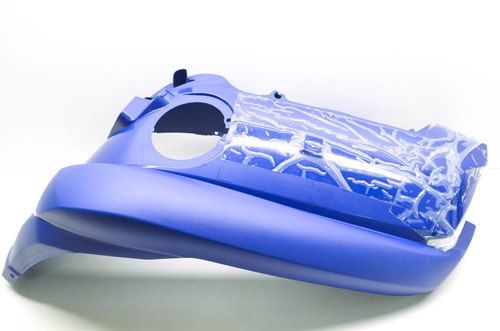 This procedure might have to be done two or three times to make sure all the paint is gone. When wiping away the paint, use a cloth as a brush or other abrasive material that can damage the plastic surface. Also, it is a good idea to test out a small unobtrusive area first to see if the rubbing alcohol has any negative effect on the plastic. You also might consider wearing a mask and using some gloves for protection.
This procedure might have to be done two or three times to make sure all the paint is gone. When wiping away the paint, use a cloth as a brush or other abrasive material that can damage the plastic surface. Also, it is a good idea to test out a small unobtrusive area first to see if the rubbing alcohol has any negative effect on the plastic. You also might consider wearing a mask and using some gloves for protection.
Another method for how to remove spray paint from plastic with household items is vegetable oil. Everybody has this in their homes, and it is safe and easy to use for removing paint from plastic. Place a clean cloth into the vegetable oil and rub where the paint has spilled. Here you can apply with a lot more energy until you can see the paint coming off.
How to remove spray paint from plastic with household items? We all most likely have vinegar in the kitchen, so why not use it for removing paint from plastic.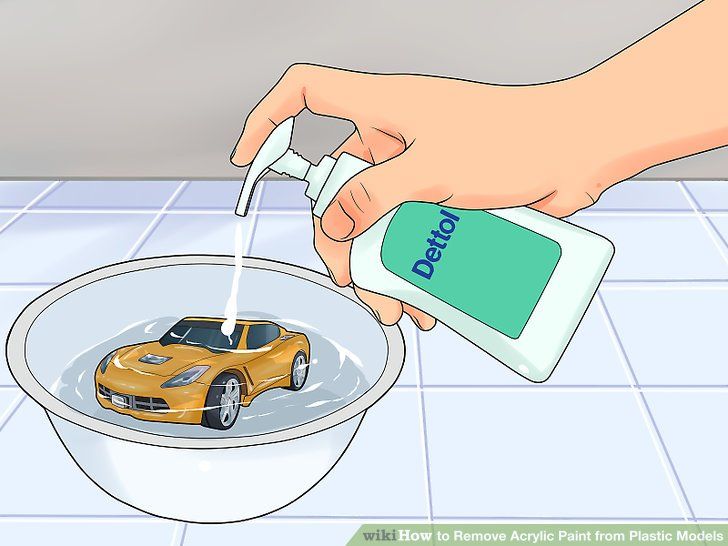 However, there are certain things you must take into account, including the type of paint on the plastic surface. Vinegar will remove latex paint most effectively. All you have to do is heat some distilled vinegar in the microwave on high. Leave it in for one minute and it should then be quite warm but not too hot. Dip a sponge into the warm vinegar and rub the area where the paint is on the plastic surface.
However, there are certain things you must take into account, including the type of paint on the plastic surface. Vinegar will remove latex paint most effectively. All you have to do is heat some distilled vinegar in the microwave on high. Leave it in for one minute and it should then be quite warm but not too hot. Dip a sponge into the warm vinegar and rub the area where the paint is on the plastic surface.
You might need something stronger than vegetable oil when it comes to how to remove enamel paint from plastic, which is where acetone comes in. You can use nail polish, however, if the plastic is colored, a regular acetone-based product will work better. Apply directly to the paint, wait five minutes, and then wipe off with a cloth.
Any solvent gives off toxic fumes, so working in a well-ventilated area is advisable.
You can also consider denatured alcohol, which is stronger, however, you must be careful when using it.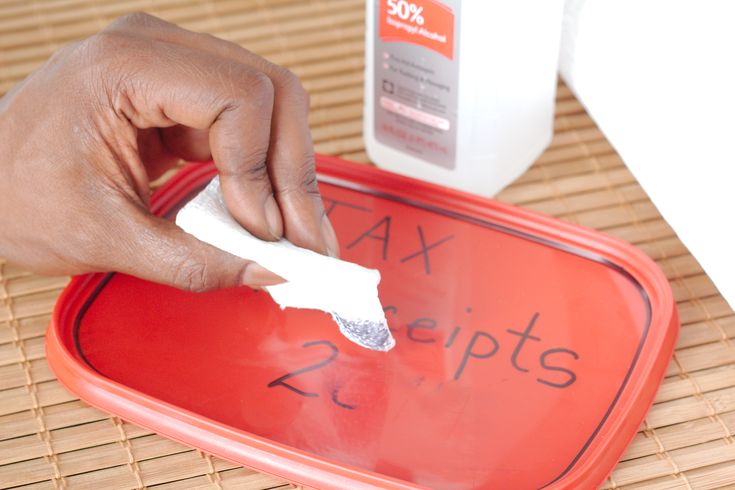 Dip a rag into the alcohol and apply only a small amount directly to the paint. Wait five minutes to make sure it is not affecting the paint. Only apply once as the plastic surface will be damaged if too much is used. If you notice the paint is dissolving, you can then scrape the paint off. Once the paint has been removed, there might be a few spots left. Simply wipe the surface with a cloth dipped in some warm soapy water and then leave the surface to dry thoroughly. This method is best used on harder plastics like a bucket and only works to take off latex paint.
Dip a rag into the alcohol and apply only a small amount directly to the paint. Wait five minutes to make sure it is not affecting the paint. Only apply once as the plastic surface will be damaged if too much is used. If you notice the paint is dissolving, you can then scrape the paint off. Once the paint has been removed, there might be a few spots left. Simply wipe the surface with a cloth dipped in some warm soapy water and then leave the surface to dry thoroughly. This method is best used on harder plastics like a bucket and only works to take off latex paint.
You can also use ammonia, which works more on acrylic and latex paints. Mineral spirits will work better on oil-based paints. Solvents should always be tested out first in an unobtrusive area. The different plastic will react differently, so take a Q-tip and place a drop on the plastic surface, and wait to see what happens. If you do not notice any difference, it should be okay to use the solvents.
As you can see, there are several effective methods for removing paint from plastic surfaces.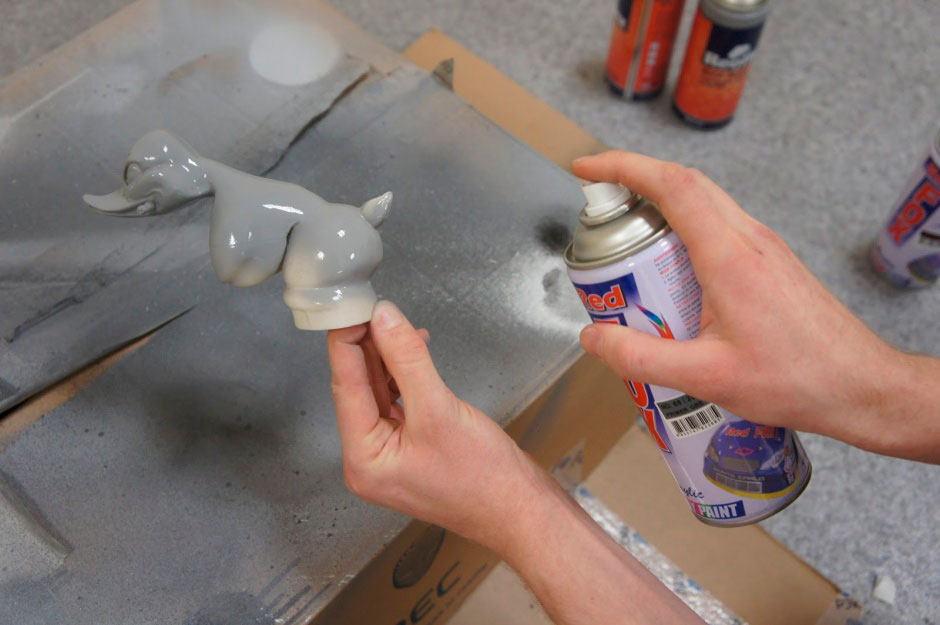 Here is a brief summary of these different methods.
Here is a brief summary of these different methods.
| Removing Paint From Plastic-Methods | Effective | Safe to use | Use Caution |
| Paint Scraper | ✔ | ✔ | ✔ |
| Rubbing Alcohol | ✔ | ✘ | ✔ |
| Distilled Vinegar | ✔ | ✔ | ✘ |
| Vegetable oil | ✔ (oil-based paint) | ✔ | ✘ |
| Acetone | ✔ | ✘ | ✔ |
| Solvents (Denatured alcohol, thinners) | ✔ | ✘ | ✔ |
There is also some paint remover for plastic products on the market that are effective and safe to use on a variety of surfaces including plastic.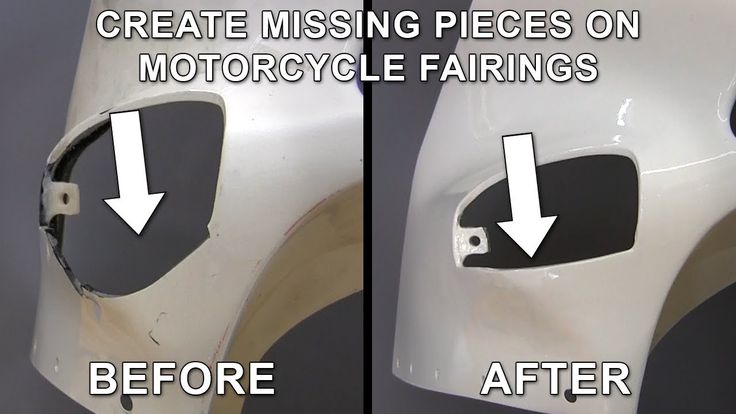 These products can also be used for a variety of other purposes around the house, making them versatile and worth what you pay for them.
These products can also be used for a variety of other purposes around the house, making them versatile and worth what you pay for them.
If you are looking for a product specialized product for removing paint, then you do not need to look any further than this fantastic product. The water-based formula allows you to safely and easily remove all kinds of paint from a range of surfaces, including metal, plastic, concrete, fiberglass, and more. This product is eco-friendly and safe for the user.
MOTSENBOCKER's Lift Off
View on Amazon
PROS
CONS
If you only need to clean up a small amount of spilled paint and you do not want to buy a whole new product, this all-in-one domestic cleaner is a great option. Once you have removed the spilled paint, you can use these cleaning pads to clean up any other sources of dirt in your home. This product is perfect for cleaning doors, bathtubs, oven doors, and even light switches. There are no harsh chemicals in this product, and you can either re-fill the product once it runs out or recycle the bottle.
Once you have removed the spilled paint, you can use these cleaning pads to clean up any other sources of dirt in your home. This product is perfect for cleaning doors, bathtubs, oven doors, and even light switches. There are no harsh chemicals in this product, and you can either re-fill the product once it runs out or recycle the bottle.
MR CLEAN Magic Eraser
View on Amazon
PROS
CONS
This product works the first time every time to remove a variety of tough stains like paint on plastic.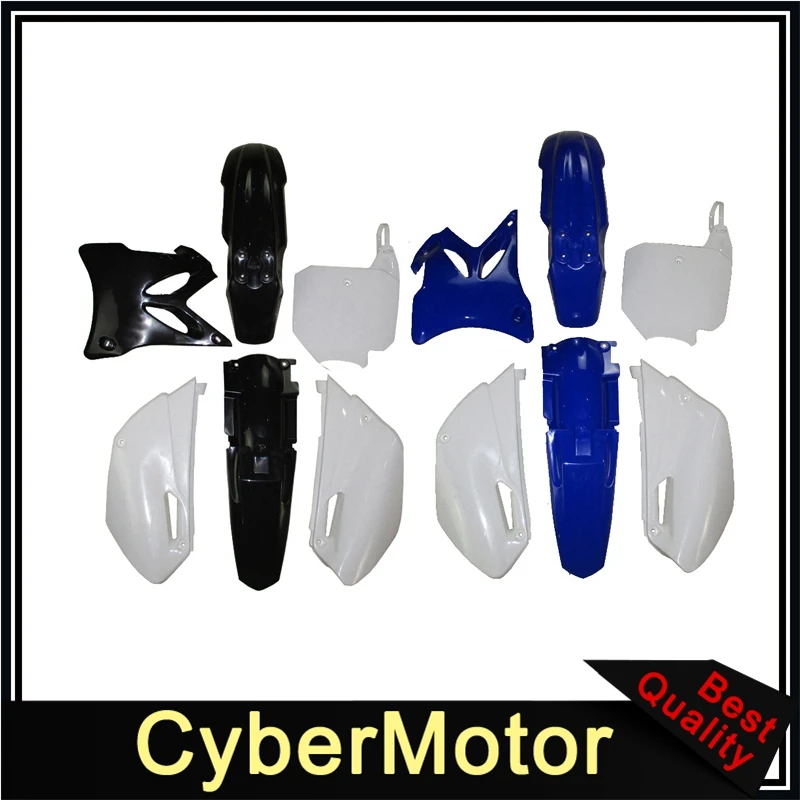 If you have tried many products and they have not worked, then you definitely need to try this product. You can safely use this paint stripper for plastic, clothing, glass, and a variety of other surfaces. This paint remover for plastic is easy to use, simply apply it to the stain and leave it to penetrate for at least a minute. You can then use an absorbent cloth to wipe it off.
If you have tried many products and they have not worked, then you definitely need to try this product. You can safely use this paint stripper for plastic, clothing, glass, and a variety of other surfaces. This paint remover for plastic is easy to use, simply apply it to the stain and leave it to penetrate for at least a minute. You can then use an absorbent cloth to wipe it off.
GOOF OFF Household Heavy Duty Remover
View on Amazon
PROS
CONS
Plastic models and painting them is a popular hobby and at some point, a paint stripper for plastic will be necessary. Maybe a mistake was made, or you could simply want to apply a fresh coat of paint, either way, the old paint needs to be removed. Plastic models can either be painted with enamel or acrylic paints and these can be removed by using a commercial paint remover you get at a model store. You could also try out other products like Easy Off, Simple Green, Purple Power cleaner, or SuperClean.
Maybe a mistake was made, or you could simply want to apply a fresh coat of paint, either way, the old paint needs to be removed. Plastic models can either be painted with enamel or acrylic paints and these can be removed by using a commercial paint remover you get at a model store. You could also try out other products like Easy Off, Simple Green, Purple Power cleaner, or SuperClean.
There are other options available as well, and these methods use materials that might be lying around the house. One cheap and easy method is to use Dettol or some other antiseptic product. This will work best on acrylic paints. Follow the process below for removing paint from plastic models.
Any plastic model or item that soaks in the Dettol will loosen any glue there is.
However, this is a good thing if you want to adjust any mistakes. You should just be aware that the glue will break down.
Another household item that can be used to remove paint from plastic is oven cleaner. You can spray the model and place it into a sealed bag. Leave this for a day or two and remove it, use a brush to clean the item, and rinse it off with water.
This method should only be considered as a last course of action. If you do attempt sanding, use fine-grit sandpaper, and work extremely carefully so that you do not damage or remove any surface details.
This will follow the same process as the Dettol. Place some alcohol into a container, just enough to soak the plastic items. Submerge the plastic model pieces and leave for about 20 minutes. The enamel paint might take a bit longer to remove. After soaking, take a toothbrush and remove the paint. Rinse once done and leave to dry.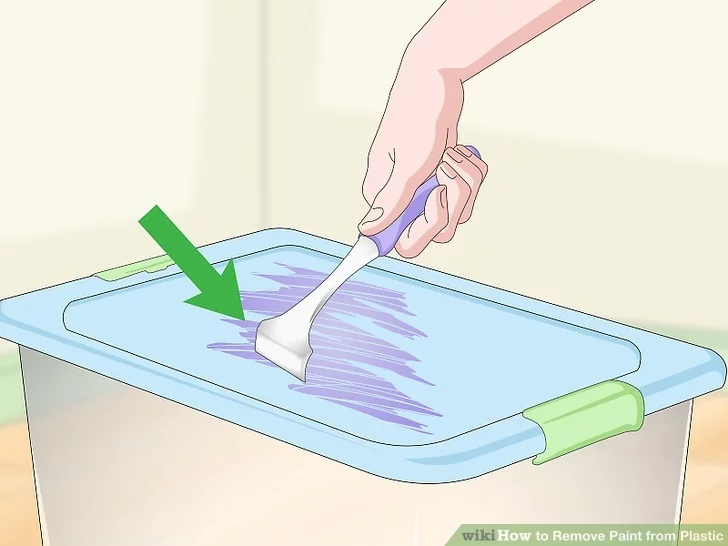
This method can be used to remove both acrylic and enamel paint.
Paint remover for plastic products may contain harmful ingredients that could affect the plastic surface. So, always read the label and make sure what you are buying is correct and follow the instructions for use. Even some of the household items can also cause damage to plastic surfaces. Nail polish remover, for instance, can melt plastic, so it is best not to use too much of it. Following are a few more tips, so you can remove paint from plastic carefully.
 Also, work in a well-ventilated space
Also, work in a well-ventilated space
If you are ever stuck with a situation where you have spilled paint on a plastic surface, you now know what paint stripper for paint method to use. You can also use any of our top recommended products to easily remove the spilled paint in a matter of minutes.
When using a paint stripper for plastic, you have to be careful what you use. Harsher chemicals like paint thinners can melt the plastic. First, try using simple soap and water, then try some vegetable oil. If the paint is dry, you can also try scraping it off and if that does not work, try a little acetone or rubbing alcohol.
Harsher chemicals like paint thinners can melt the plastic. First, try using simple soap and water, then try some vegetable oil. If the paint is dry, you can also try scraping it off and if that does not work, try a little acetone or rubbing alcohol.
Spray paint can sometimes get onto surfaces even if you have tried your best not to mess. Depending on the type of paint, you can either use soap and water or if it is oil-based paint, some acetone, or denatured alcohol if it is latex paint.
The best method would be to get rid of the paint straight away. However, you can also lightly sand the surface to get rid of the paint. Do not overdo this method as you can leave marks, sanding will also dull the surface.
Thinners as a paint stripper for plastic may not be the best method. Thinners might not damage some harder plastics, but they will definitely harm softer plastics and dissolve Styrofoam. Trying something less harsh first would be a better idea.
Trying something less harsh first would be a better idea.
Free shipping
on orders over 290€
1 year warranty
for manufacturer defects
Picking the right size
in 99% of cases
Finntrail system
about our gear
Waders
Jackets
Footwear
Gloves
Layering
KEY FEATURES
Off-road gear
The highest quality ATV & UTV riding gear for any weather and riding conditions. 100% waterproof. Breathable. Durable. Technologically advanced.
Go shopping
SNOWMOBILE GEAR
Specialized snowmobile gear for a comfortable ride in cold weather. Everything a professional rider needs: overalls, layering and accessories.
Go shopping
Featured products
ENDURO Graphite
the most durable
279 EUR
AQUAMASTER Blue
reliability & comfort
647 EUR
ENDURO BF Camogrey
bootfoot waders
329 EUR
MUDWAY NEW Camogrey
199 EUR
MUDWAY NEW Graphite
199 EUR
SPORTSMAN Blue
179 EUR
AIRMAN Grey
bootfoot waders
249 EUR
NEW
SPEEDMASTER Camoarmy
the most advanced
319 EUR
NEW
POWERMAN 22 Camoarmy
Two-piece suit
599 EUR
CHECK OUT OUR PARTNERS
Our distributors SuperATV, ASP Group and others where you can buy Finntrail gear too.
See more
HIGH RATED QUALITY
Our gear is made of high quality fabrics and materials. Durable, waterproof, breathable and comfortable gear.
See more
OUR RIDERS
Here are the ones who’ve tested our gear on the roughest trails. See how it was.
See more
OUR SPECIAL OFFERS
Gifts, discounts and special offers. See what we've prepared for you.
See more
Follow us
THE FINNTRAIL BLOG
Is a UTV a Good Investment
Tips for Responsible Off-Roading
Show more articles
Select a country
Afghanistan
Albania
Algeria
Andorra
Angola
Anguilla
Antarctica
Antigua and Barbuda
Argentina
Armenia
Aruba
Australia
Austria
Azerbaijan
show more
Bahamas
Bahrain
Bangladesh
Barbados
Belarus
Belgium
Belize
Benin
Bermuda
Bhutan
Bolivia
Bosnia and Herzegowina
Botswana
Bouvet Island
Brazil
British Indian Ocean Territory
British Virgin Islands
Brunei Darussalam
Bulgaria
Burkina Faso
Burundi
show more
Cambodia
Cameroon
Canada
Cape Verde
Cayman Islands
Central African Republic
Chad
Chile
China
Christmas Island
Cocos Islands
Colombia
Comoros
Congo
Cook Islands
Costa Rica
Cote D'ivoire
Croatia
Cuba
Cyprus
Czechia
show more
Denmark
Djibouti
Dominica
Dominican Republic
East Timor
Ecuador
Egypt
El Salvador
Equatorial Guinea
Eritrea
Estonia
Ethiopia
show more
Faeroe Islands
Falkland Islands
Fiji
Finland
France
French Antarctic
French Guiana
French Polynesia
show more
Gabon
Gambia
Georgia
Germany
Ghana
Gibraltar
Greece
Greenland
Grenada
Guadeloupe
Guatemala
Guinea
Guinea-bissau
Guyana
show more
Haiti
Heard and McDonald Islands
Honduras
Hong Kong
Hungary
Iceland
India
Indonesia
Iran
Iraq
Ireland
Israel
Italy
show more
Jamaica
Japan
Jordan
Kazakhstan
Kenya
Kiribati
Korea (North)
Korea (South)
Kuwait
Kyrgyzstan
show more
Laos
Latvia
Lebanon
Lesotho
Liberia
Libya
Liechtenstein
Lithuania
Luxembourg
show more
Macau
Macedonia
Madagascar
Malawi
Malaysia
Maldives
Mali
Malta
Marshall Islands
Martinique
Mauritania
Mauritius
Mayotte
Mexico
Micronesia
Moldova
Monaco
Mongolia
Montenegro
Montserrat
Morocco
Mozambique
Myanmar
show more
Namibia
Nauru
Nepal
Netherlands
Netherlands Antilles
New Caledonia
New Zealand
Nicaragua
Niger
Nigeria
Niue
Norfolk Island
Norway
show more
Pakistan
Palau
Palestine
Panama
Papua New Guinea
Paraguay
Peru
Philippines
Pitcairn Islands
Poland
Portugal
Puerto Rico
show more
Reunion
Romania
Russia
Rwanda
Saint Helena
Saint Kitts and Nevis
Saint Lucia
Saint Vincent and the Grenadines
Saint-Pierre and Miquelon
Samoa
San Marino
Saudi Arabia
Senegal
Serbia
Seychelles
Sierra Leone
Singapore
Slovakia
Slovenia
Solomon Islands
Somalia
South African Republic
South Georgia and the South Sandwich Islands
Spain
Sri Lanka
Sudan
Suriname
Svalbard and Jan Mayen Islands
Swaziland
Sweden
Switzerland
Syria
show more
Taiwan
Tajikistan
Tanzania
Thailand
Togo
Tokelau
Tonga
Trinidad and Tobago
Tunisia
Turkey
Turkmenistan
Turks Caicos Islands
Tuvalu
show more
U. S. Virgin Islands
S. Virgin Islands
United States
Uganda
Ukraine
United Arab Emirates
United Kingdom
Uruguay
Uzbekistan
show more
Vanuatu
Vatican City
Venezuela
Viet Nam
Wallis and Futuna Islands
Western Sahara
Zaire
Zambia
Zimbabwe
{{#DETAIL_PAGE_URL}} {{SECTION_NAME}} {{NAME}} {{/DETAIL_PAGE_URL}}
Color: {{COLOR}}
{{#IS_SIZE}} Size: {{{SIZE}}} {{/IS_SIZE}}
Quantity:
Only {{AVAILABLE_QUANTITY}} left
{{#SHOW_DISCOUNT_PRICE}}
{{{SUM_FULL_PRICE_FORMATED}}}
{{/SHOW_DISCOUNT_PRICE}}
{{{SUM_PRICE_FORMATED}}}
{{/GIFT}} {{#GIFT}}
{{/GIFT}} {{/EMPTY_BASKET}} {{#EMPTY_BASKET}}
Your basket is empty
{{/EMPTY_BASKET}}
{{/FREE_SHIPPING}} {{#FREE_SHIPPING}}Free shipping available
{{/FREE_SHIPPING}}{{^FREE_SHIPPING}}
{{{FREE_SHIPPING_PERCENT}}}%
{{/FREE_SHIPPING}}
{{{FREE_SHIPPING_PRICE}}}
CHECKOUT {{{PRICE_FORMATED}}}
{{/EMPTY_BASKET}} {{#EMPTY_BASKET}} {{/EMPTY_BASKET}}Continue shopping
Your cart:
Your basket is empty
JavaScript must be enabled for the site to work correctly
Loading
. ..
..
Home » Useful articles " How to remove paint from plastic
Share:
05 November 2019
A popular finishing material - paint, reliably protects the surface of plastic, wood for a long time. But over time, the appearance is lost and a rhetorical question arises: how to remove the old paint from the walls. Moreover, those who have tried to do it mechanically know that the bathtub coating can be ruined. Also, during the construction or repair of a dwelling, window sills, sockets, walls, switches, etc. can suffer from paintwork materials. The “colorful” problem can be solved if you know the surface features and the composition of the substance. The common thermal method is also not an option for plastic, since the product can “lead”. It remains to turn to the chemical method.
Available plastic identification methods include:
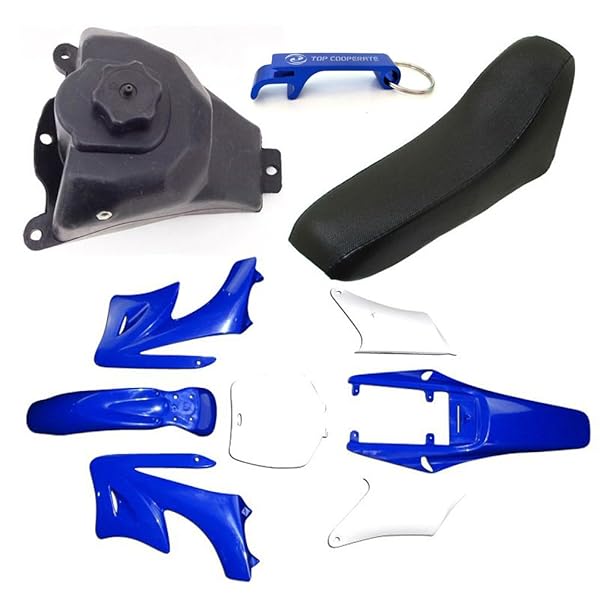
| Advice! First of all, study the marking - so the removal will be faster and easier. Indeed, after determining the substance, it remains only to determine the type of paint - water-based paint is easier to remove from plastic. |
Product labeling is carried out according to international standards. It is easy to determine it by the number inside the triangle and the combination of letters under the triangle, and then look for information: how to wash the paint from a particular type of plastic. If inside the number 1 is polyethylene terephthalate (PETE), the numbers 2 and 4 indicate low and high density polyethylene (HDPE, LDPE), the number 3 indicates products made of polyvinyl chloride (V), the number is a plastic material made of polypropylene (PP), the number 6 identifies resource - polystyrene (PS).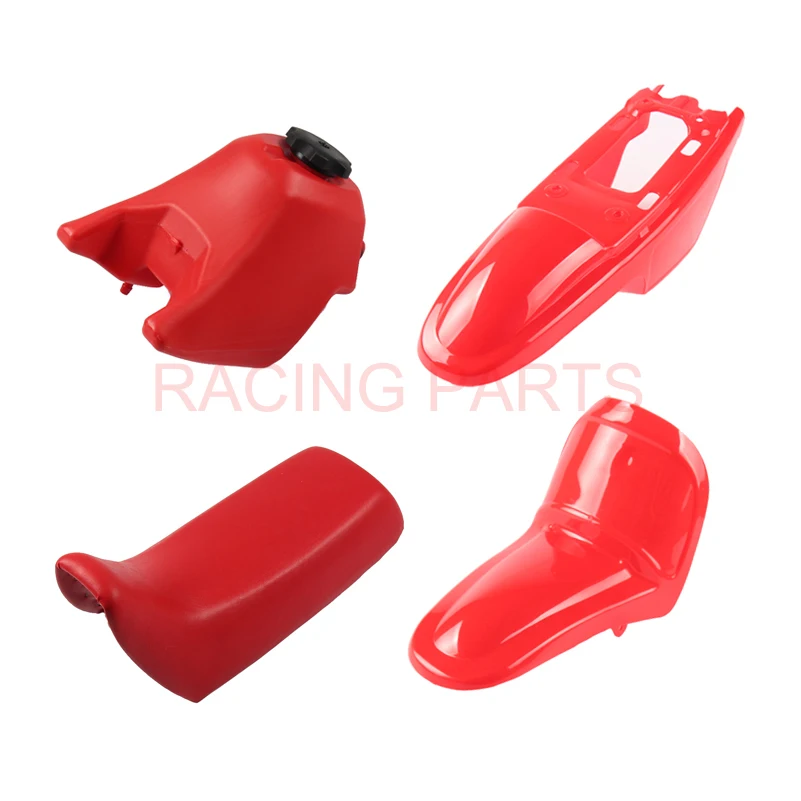 The number 7 denotes the remaining substances (OTHER) - then it is useless to apply the method, because for sure it will not be possible to find out: which resource the manufacturer used.
The number 7 denotes the remaining substances (OTHER) - then it is useless to apply the method, because for sure it will not be possible to find out: which resource the manufacturer used.
|
All plastic substances burn differently, therefore, having learned from the description and signs of combustion what the surface is made of, you can understand: how to wipe off the paint.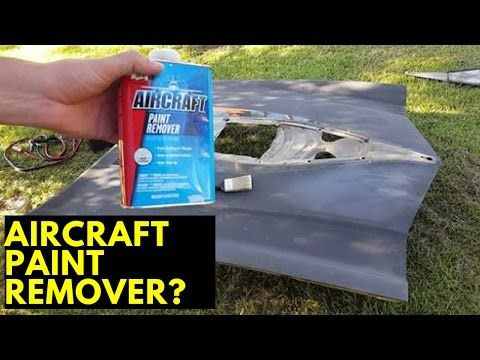

If you cannot determine the type of material using the first two methods, and you still do not know: how to remove old paint from plastic, the third method remains. It is necessary to collect a basin of water and immerse the sample in the liquid. Only polypropylene and polyethylene (absolutely any) will not sink and remain afloat. Fluoroplastic will sink very quickly, a little later PVC and PET / PET plastic will go to the bottom. Polystyrene and polyamide will float the longest.
Only polypropylene and polyethylene (absolutely any) will not sink and remain afloat. Fluoroplastic will sink very quickly, a little later PVC and PET / PET plastic will go to the bottom. Polystyrene and polyamide will float the longest.
| Advice! To understand for sure: what kind of material is in front of you and how to erase paint from plastic, use several methods at once. |
Before removing paint from plastic, study the nuances or even before you start the dyeing process.
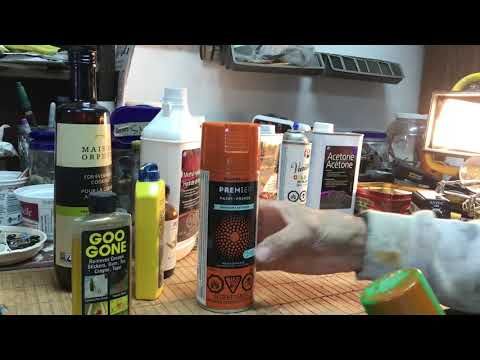
Important! Choose paint removal methods according to its type. It is better to protect the plastic from staining unnecessary parts by sealing it with construction tape.
Once you have determined the type of coating, you can choose the method of removing contaminants - after all, each substance has its own characteristics. There are several options: how to remove old paint from the surface of plastic products.
Fresh stains are easily removed with soapy water, but there is no guarantee that there will be no traces (stains may appear). You can use vegetable oil: moisten a rag or cotton pad and gently rub the problem area. It is better to change the rubbing several times so that the removed paint is not rubbed into the plastic again.
You can use vegetable oil: moisten a rag or cotton pad and gently rub the problem area. It is better to change the rubbing several times so that the removed paint is not rubbed into the plastic again.
If the pigment has already been absorbed, any cleanser in the consistency of a gel will do. It is necessary to apply on the stain for 15 minutes, and then rinse with clean water, after removing the residue with a rag. Window cleaner removes stains well from plastic: apply it for 10 minutes, then wipe it with a rag.
How to wipe paint off plastic if a lot of time has passed - this question is asked much more often than others. After all, you don’t always immediately notice the problem, but after a while it’s no longer possible to cope with simple means. For this, products of the chemical industry come to the rescue. You can use refined gasoline, kerosene, white spirit, brake fluid, alcohol or ammonia. Contamination from paint is a reparable thing, but it is better to clean the concrete solution immediately.
Solvents are excellent for latex coatings. But the room during work should be ventilated, and hands should be protected with gloves. You can protect yourself by wearing protective goggles.
| Advice! Test the solution on a small area of the plastic first to make sure the surface is not damaged. |
It will also do a great job with a stain from white spirit latex paint: just 10-15 minutes and the solution can be washed off. Methanol will perfectly clean the surface, but it must be removed immediately, otherwise yellowness will remain on plastic products.
By the way, an alkyd-based paintwork also effectively removes white spirit, in addition to this substance, ammonia or a solvent is used. The main thing is that after application, after 15-20 minutes, completely clean the product from the applied product.
Water-based paints are relatively safe for others, and besides, they are easy to remove even after some time. They are easily applied to the surface and are quite easy to clean.
 There are special washes for plastic structures in hardware stores. Consult with a consultant or manager, he probably knows how to erase the paint if ordinary solvents can not cope.
There are special washes for plastic structures in hardware stores. Consult with a consultant or manager, he probably knows how to erase the paint if ordinary solvents can not cope. Important! Do not pick the stain from the edges, start from the middle. To do this, make an incision with the sharp tip of a knife. Then carefully remove the hardened sealant along with the stain.
Share:
See also
Avdiivka (Donetsk region)
Almazna (Lugansk region, Alchevsk district)
Alupka (Autonomous Republic of Crimea, Bakhchysarai district)
Alushta (Autonomous Republic of Crim)
Alchevsk (Luhansk region)
AMVROSIKA (Donetsk region, Donetskiy district)
Ananyv (Kideskaya region, Podilsky district)
Andrushivka, Berdichivsky district)
Anthracy region)
Apostolove (Dnipropetrovsk region, Krivorizky district)
Armyansk (Autonomous Republic of Crimea)
Artsyz (Odeska region, Bolgradskiy district)
Balaklіya (Kharkivska region, Izyumsky district)
Balt (Keska region)
bar (Vinnitzka region, Zhmerinsky district)
Baranivka (Zhitomirka region, Zvyagelsky district)
Barvinkov (Kharkivsk region) 9000 9000 9000 9,000 9,000 9,000 9,000 9,000 9,000 Chernigivska region, Nizhinsky district)
Bakhmach (Chernigivska region, Nizhinsky district)
Bakhmut (Donetsk region)
Bakhchisarai (Autonomous Republic of Crimea, Bakhchysarai district)
Bashtanka (Mikolavsk region, Bashtan district)
Belz (Lviv region, Chervonogradsky district)
Berdichiv (Zhytomyr region)
Berdyansk (Zaporizka region Berezan (Kyiv region)
Berezivka (Odeska region, Berezivsky district)
Berezne (Rivne region, Rivnensky district)
Berestechko (Volynska region, Lutsky district)
Berislav (Khersonska region, Berislavsky district)
Bershad (vіnnitska region, Gaisinsky district)
bibrka (Lviv region, Lviv district)
bilas (Donetsk region, Pokrovsky district)
Bilogirsk (Autonomous Republic of Crimea, Bilogirsky district)
Bilozerske (Donetsk region, Pokrovsky district)
Bilopillya (Sumsk region, Sumy district)
Bilyaivka (dressing region region)
Blagovani (Kirovogradska region, Golovansky district)
Bobrinets (Kirovogradska region, Kropyvnysky district)
Bobrovitsa (Chernizhivsk region)
9000 (Kharkodka region) (Kyiv region, Obukhivsky district)
Bokovo-Khrustalne (Lugansk region, Rovenkivsky district)
Bolgrad (Odeska region, Bolgradsky district)
Bolekh (ivano-Frankivsk region)
Borce (CherniGivsk region, Nіzhinsky district)
Borislav (Lviv region)
Borispil (Kyivska region)
Borshchiv (Ternopіlska region, Chortkivsky region)
Boys (Kiyvvyvskiye Boys. Fastivskiy district)
Fastivskiy district)
Brovary (Kyiv region)
Brody (Lviv region, Zolochivskiy district)
Bryanka (Luhansk region)
Bunge (Donetsk region, Gorlivskiy district)
BURIN (Sumska region, Konotopsky district)
Burshtin (Ivino-Frankivsk region)
Busk (Lviv region, Zolochyvsky district)
buchi (Kyivska region)
buchich (thornopilsk region, Chortkivsky district)
Valka ( Kharkiv region, Bohodukhivsky district)
Varash (Rivne region)
Vasylivka (Zaporizka region, Vasylivsky district)
Vasilkiv (Kyiv region)
Vatutine (Cherkasy region)
VAZKIVTSI (Chernivtsika region, Viznitsysky district)
Great Most (Lvіvsk region, Chervonogradsky district)
Verkhizhivtsev (DNIPPETROVSKYA, Kama'yansky district)
Verkhnodniprovsk (Dnipropetrovsk region)
Vyzhezhnitsa region, Vizhnytskyi district)
Vilkove (Odeska region, Izmailsky district)
Vynniki (Lviv region, Lvivsky district)
Vynogradiv (Zakarpatskaya region, Beregivsky district)
Vishgorod (Kyivska region, Vishgorodsky district)
Vishnev (Kyivska region, Buchansky district)
VILILOGIRSK (DNIPPETROVSKA)
VILNYANCK (Zaporizka region)
Vinnitsy (VINNITYAKA Oblastsky (vіnnitsyka region) , Chuguivsky district)
Voznesenivka (Luhansk region, Dovzhansky district)
Voznesensk (Mykolaiv region)
Volnovakha (Donetsk region, Volnovasky district)
Volodymyr-Volinsky (Volinska region)
Dear (Khmelnitzka region, Khmelnitsky district)
Vorozhba (Sumska region, Sumy district)
Vuglegіrsk (Donetsk region, Gorliv district)
Vug lady (Donetsk region)
duck Poltava region)
Gayvoron (Kirovohrad region, Golovanivsky district)
Gaisin (Vinnytsia region, Gaisinsky district)
Galich (Ivano-Frankivsk region, Ivano-Frankivsky district)
Genechyk (Khersonska region, Geniychy district)
Hertz (Chernivtsa region, Chernibivsky district)
Girnik (Donetsk region, Pokrovsky district)
GIRSKA (Luhansk Region, Svyrodonky District)
Gliny
Hlobyne (Poltava region, Kremenchutsky district)
Hlukhiv (Sumy region)
Gnivan (Vinnytsia region, Vinnitsky district)
Hola Pristan (Kherson region)
Golubіvka (Luhansk region)
Gorishni Plavni (Poltavka region)
Gorlivka (Donetsk region)
Gorodenka (Ivano-Frankivska, Kolomiysky district)
Gorodishche (Cherkasy region, Cherkasy district)
City (Chernig. , Chernigivskyi district)
, Chernigivskyi district)
Gorodok (Lviv region, Lviv region)
Gorodok (Khmelnytsky region, Khmelnytsky region)
Gorohiv (Volyn region, Lutsky region)
Grebinka (Poltavska region, Lubensky district)
Gulyipole (Zaporizka region, Pskyvskiy district)
Debaltsevo (Donetsk region)
Derazhni (Khmelnitzka region, Khmelnitsky district)
dergachi (Kharkivska region, Kharkivsky district)
dzhaki
9000. (Autonomous Republic of Crimea)
Dnipro (Dnipropetrovsk region)
Dniprorudne (Zaporizka region, Vasilivsky district)
Dobromil (Lviv region, Sambirsky district)
Dobropilla (Donetsk region)
Dovzhansk (Luhansk region)
Dokuchavsk (Donetsk region)
Dolina (Ivano-Frankivsk region)
Dolinska (Kirovogradska region, Kropyvniki district)
Donetsk (Donetsk region)
Drohobych (Lviv region)
Druzhba (Sumsk region, Shostka district)
Druzhkivka (Donetsk region)
Dublyany (Lviv region, Lviv region)
Dubno (RIVNNENSKA region)
Dubrovitsa (RIVNNENSKA region, Sarnensky district)
Dunayvtsi (Khmelnitzka region, Kam'yanets-Uzelskiy district)
Energodar (Zaporizka region)
єvpatoreri (autonomna KRIM) 9000 Donetsk region)
Zhashkiv (Cherkaska region, Umansky district)
Zhdanivka (Donetsk region)
Zhydachiv (Lviv region, Stryisky district)
Zhytomyr (Zhytomyr region)
Zhmerinka (Vinnitsyka region)
Zhovkva (Lviv region, Lviv district)
Zhovti Derli (Dnipropetrovsk region)
Zavodski (Poltavka region, Mirgorod district)
Zalznoye (Donetsk region, Bakhmutsky district)
Halls (Tern.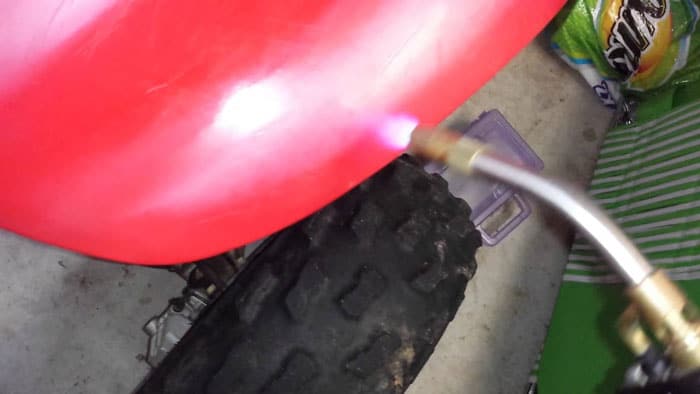 region, Chortkivsky district)
region, Chortkivsky district)
Zaporizhzhya (Zaporizka region)
Zastavna (Chernivetska region, Chernivetsky district)
Zbarazh (Ternopil region, Ternopilsky district)
Zboriv (Ternopilska region, Ternopilsky district)
Zvenigorodka (Cherkasyka region, Zvenigodsky district)
Zvyagel (Zhitomirka region)
Zdolbuniv (Rivneska region)
Zelenodolskiy (Dnieperpetrovka region) 'ya (Lugansk region, Alchevsk district)
Zinkiv (Poltava region, Poltava district)
Zmіїv (Kharkiv region, Chuguivsky district)
Prima'yanka (Kirovograd region)
gold (Luhansk region, s, s, sthyrodonky district)
Zolotonosha (Cherkasyka region)
Zolochyv (Lviv region, Zolochyvskiy district)
Zorinski (Luhansk region, alchevoy district)
Zugrerys (Donetsk region, Donetsk region)
Ivano-Frankivsk (Ivano-Frankivsk region)
Izmail (Odeska region)
Izyum (Kharkiv region)
Izyaslav (Khmelnitsky region)
ILININTSI (Vinnitzka region, Vinnitsky district)
ilovaysk (Donetsk region, Donetskiy district)
izkerman (Autonomous Krim, Bakhchisaray district)
Irmino (Lugansk region)
Irshava (Zakarpatskaya region, Khustsky district)
Ichnya (Chernigivska region, Prilutsky district)
Kagarlyk (Kyivska region, Obukhivsky district)
Kadivka (Luhansk region)
Kalinivka (Vinnitska region, Khmilnitsky district)
Kalush (Ivano-Frankivsk region)
Kalmiusk (Donetsk region, Kalmiyu district)
Kam'yanets-Ledkiy (Khmelnitsyka region)
Kam'yank district)
Kam'yanka-Buzka (Lviv region, Lviv region)
Kam'yansk (Dnipropetrovsk region)
Kam'yanka-Dniprovska (Zaporіzka region, Vasilivsky district)
Kamіn-Shirka region Kashirsky district)
Kaniv (Cherkasyka region)
Karlіvka (Poltavska region, Poltava district)
Kakhovka (Khersonska region)
Kerch (autonomna Krim)
Kiev
Kipeche (Luhansk region, alchevo district)
Kіnerets (Velin.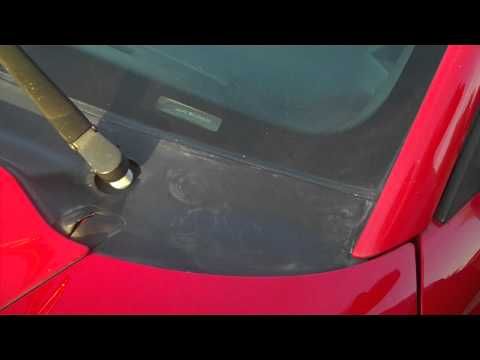 region, Lutsky district)
region, Lutsky district)
Kіlia (Odeska region, Izmailsky district)
Kitsman (Chernivetska region, Chernivtsky district)
Kobelyaki (Poltava region, Poltava district)
Kovel (Volinska region)
Codima (dressing region region, podіlsky district)
Kuzyatin (vіnnitska region)
Kolomiya (ivi-Frankivska)
Komarno (Lviv region)
Konotop (Sumy region)
Kopychyntsi (Ternopil region, Chortkiv region)
Korets (Rivne region, Rivnensky region)
Korosten (Zhytomyr region)
Korostishiv (Zhytomyr region, Zhytomyr region)
Korsun-Shevchenkivskiy (Cherkasyka region, Cherkasy district)
Koryukivka (Chernigiv region, Koryukivsky district)
Kost (ivoy-Frankivsk region, Kostyvskiy district)
Kostopyl (RIVNENSKA region)
9000 )Kramatorsk (Donetsk region)
Krasyliv (Khmelnytsky region, Khmelnitsky district)
Krasnohorivka (Donetsk region, Pokrovsky district)
Krasnohrad (Kharkiv region, Krasnogradsky district)
Red -Revspsk (autonomous Resbubbleka Crim)
Kremenets (Ternopilska region)
Kremenchuk (Poltavka region)
Kreminna (Luhansk region, sryodonets district)
Kriviy RIG (DNIPPETROVSKA region)
CROVENSIS) CROVELIT (PLASTISKY, KOTOTSHIK)
Kropyvnytskyi (Kirovograd region)
Kup'yansk (Kharkiv region)
Kurakhove (Donetsk region, Pokrovsky district)
Ladyzhyn (Vinnytska region)
Lanivtsi (Ternopilska region, Kremenenky district)
Lebedin (Sumska region)
liman (Donetsk region)
Lipovets (Vinnitsyka region, Vinnitsky district)
Lisichansk
Lozova (Kharkikіvka region) Lokhvytsya (Poltava region, Mirgorodsky district)
Lubny (Poltava region)
Lugansk (Lugansk region)
Lutugine (Lugansk region, Lugansky district)
Lutsk (Volynska region)
Lviv (Lviv region)
Lotoml (Volinska region, Kovelsky district)
Lyubotin (Kharkivsk region)
Makіvka (Donetsk region)
Malay of the temple (Kirovograd region, Novo -Ukrainian District)
Malin (Zhitomirika) Malin (Zhitomirika)
Mar'їnka (Donetsk region, Pokrovsky district)
Marganets (Dnipropetrovsk region)
Mariupol (Donetsk region)
Melitopol (Zaporizka region)0004
Merefa (Kharkivsk region, Kharkivsky district)
Mikolav (Lviv region, Striysky district)
Mikolav (Mikolavsk region)
Mikolavka (Donetsk region, Kramatorskiy district)
Mirgorod (Poltavska Region)
Mirnos
Myronivka (Kyiv region, Obukhiv district)
Myusinsk (Lugansk region, Rovenkiv district)
Mohyliv-Podilsky (Vinnytska region)
Lugansk region, Molodogvarganysk region0004
Molochansk (Zaporizka region, Pskyvskiy district)
Monastiriska (Ternopіlska region, Chortkivsky district)
Monastiris (Cherkasyka region)
Morshin (Lvіvsk region)
Mospin (Donetsk region, Donetskiysky district, Donetskiysky district, Donetskiysky district, Donetskiysky district, Donetskiysky district, Donetskiysky district, Donetskiysky district, Donetskiysky district, Donetskoye (Lviv region, Yavorivsky district)
Mukachevo (Transcarpathian region)
Nadvirna (Ivano-Frankivsk region, Nadvirnyansky district)
Nemyriv (Vinnytsia region, Vinnitsky district)
NOVINSHIN (Khmelnitzka region)
nіzhin (Chernigiv region
Novy Bug (Mykolaiv region, Bashtansky district)
Novy Kaliniv (Lviv region, Sambirsky district)
Novy Rozdil (Lviv region)
Novoazovsk (Donetsk region, Kalmyusky district)
Novovolinski (Vololinska region)
Novogrodigka (Donetsk region)
Novodnіstrovsk (Chernibivka region)
Novodarzhek (Luhansk region, s, sryodonetsky district)
Novomirgorod,
Novomoskotov (Dneckoye) Novomosk.